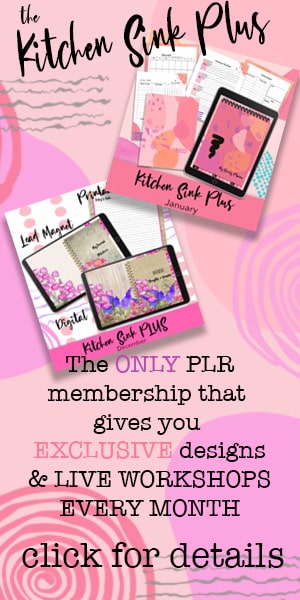7 Easy Steps to Create Your Ideal Customer Profile

7 Easy Steps to Create Your Ideal Customer Profile
It can be challenging to identify your ideal customer. It takes work, research, and patience. Some business owners are hesitant to limit their audience: Isn’t it better to target everybody and see who bites? Unfortunately, unless you have a massive budget, that strategy is doomed to fail. If you try to reach everybody, you’ll get nobody. Your message won’t resonate. It will fail to cut through the noise and speak directly to your potential buyer.
Small businesses need to limit their focus so they can target the right people with the right offer. Establishing an ideal customer profile (ICP) allows you to narrow your focus and maximize results.
With a good ICP, your message will reach the people who need to hear it.
In just a few easy steps, you can create a working profile and then refine it as you learn more. It just takes some planning and a little bit of trial-and-error, but once you’ve created a profile, you will start to see your efforts pay off.
What Is an Ideal Customer Profile?
An ideal customer profile describes your target audience as an individual. It defines, in specific terms, their demographics and the psychological factors that influence them. Businesses use an ICP to figure out where and how to reach their potential buyers.
Demographic information includes:
- Age
- Location
- Income Level
- Language
- Profession
- Marital status
Psychological data includes values, attitudes, behaviors (especially those related to the products they buy), personality type, and pain points. Understanding your target’s pain points is critical because it identifies the problems they face. Your job is to make sure they know that you provide the solution.
The Benefits of Identifying Your Ideal Customer
It takes some work to research and identify your target market, but the benefits are well worth it. Businesses identify their ideal customer to:
Maximize Their Efforts. No business has the resources to market to everyone. You need to identify the best lead for your business so you can maximize your time and budget.
Nurture Leads Effectively. The key to successful marketing is identifying and nurturing leads. The research generated by creating your ICP will lay the foundation for all of your future marketing efforts.
Craft a Message that Resonates. Marketing relies on effective communication. If you don’t speak the language of your audience, they won’t buy from you. Your ideal customer profile will help you craft a message that resonates with your audience and motivates them to act.
Create an Army of Loyal Brand Advocates. By identifying your customers’ attitudes and beliefs, you can align these with your business’s vision and mission. This will increase brand loyalty among your customers.
Better Personalize Your Customer Journey. Knowing your customers allows you to foster a personal connection with them.
It’s Easy. Finally, the internet and online resources make it easier than ever to research your audience and pinpoint exactly who they are.
Without an ideal customer profile, you’re shooting in the dark. Here are the steps to creating your ideal customer profile.
Step 1 – Know Your Products
Start by getting to know your products front and back. Understand their features and how they’re used. If you haven’t already done so, create a unique value proposition (UVP) for your offering. Your UVP is a statement that explains how the product uniquely solves the customer’s problem.
Focus not only on the features of your product and how it’s used, but the benefits it brings to users. In other words, how does it improve someone’s life? This is important because this is the real reason someone uses your product.
For example, if you offer a cloud-based project management tool, it’s not the tool you’re selling but the time you’ve freed up for your users. Take a look at your products and see if you can reframe their benefits in this way.
Step 2 – Create a Broad Description
You know your product and you probably have a pretty good idea of who would buy it from you. Consider how your product would be used and who it would help. If you already have customers, think about the type of people who buy from you. Take down some notes but be ready to scrap everything if this preliminary research is proven wrong.
Later, you’ll gather objective data to create a solid ideal customer profile, but for now, this broad description is a good place to start.
Step 3 – Research Online
Search online for your target market so you can learn more about them. If you already have customers, start there. If not, here are some places you can look for potential audience members:
Social Media. Look at your current followers on social media, especially the ones that interact with you the most. Go through their profiles to find basic demographic information, but also check out their content to get a deeper understanding of who they are and what makes them tick.
Other ways to use social media include:
- Searching for hashtags related to your product, your niche, or the broad profile you created.
- Joining groups related to your niche and seeing who is most active there. Listen to conversations (this is called “social listening”).
Your Competitors. Check out your competitors. They’ve already done their marketing research so see what you can learn from them. Look at not only their followers and customers, but also get a feel for who they’re targeting with their marketing. If they’re more experienced or successful than you, you can learn from them.
Analytics. Look at your website analytics to see who’s visiting your site. You can get demographic information this way, but also see how much time they spend on which pages. This will give you some insights into their interests. For example, you might find that they engage more with video content than text.
You can also simply Google search with keywords to find out where your audience hangs out online so you can learn more about them.
Step 4 – Gather Data
Now you’re ready to start gathering data. There are two ways to gather data – directly and indirectly.
Direct data comes from personal interactions with your target audience. This includes things like surveys, interviews, and focus groups. You have to reach out to people and connect with them, which can take a great deal of time. But the data you receive will be well worth it. Through direct data gathering, you can find out how they feel, what issues they face, what problems they have, and how they buy the products they need.
Indirect data is much easier to gather but usually the insights aren’t as deep. This is the data you get from following people on social media, checking out blog comments, or seeing user-created content. Through indirect means, you can get demographic information and also extract valuable psychographic information.
A great place to start gathering data is with current customers and followers. Reach out to them and create an opportunity to receive direct feedback.
Seek demographic and psychographic data, but look especially for pain points, challenges, issues, and questions. Your audience members are motivated to resolve these and if you can offer some form of relief, it will be easy to engage with them.
Step 5 – Create Your Customer Profile
Create a customer profile that treats your audience as one single individual. Give them a name and make it personal.
You can’t put all the information you found into the profile. Some of this data might contradict each other. Look for patterns. When you see the same thing over and over again with members of your target audience, these are the things you should include.
What if you have two sets of unmistakable patterns? For example, you might find that your customers are evenly split between Europe and North America.
If you observe something like this, you might want to segment your target market, creating two different profiles for each. But keep in mind that this will involve a lot of extra work, so only segment if it’s totally necessary.
You might instead choose to dig deeper – find something these two distinct markets have in common that overrides the demographic information you’ve uncovered (e.g. they live on two different continents, but 80% of both groups come from rural areas).
Step 6 – Use Your Customer Profile
Now, it’s time to put your ideal customer profile to use and see the difference. Here are some of the things you’ll do with your ICP:
Create a Marketing Message and UVP. Now that you know your audience, you can create marketing materials that speak directly to them. Craft a message that communicates the unique value your product offers in a way that resonates by addressing your audience’s pain points.
Choose Marketing Channels. Your ICP tells you exactly where to go to connect with your audience. The key to successful marketing is to find your audience and put your offer in front of them. You’ll also know the best times to engage them.
Create High Quality Content That Will Convert. With a keen understanding of your target market, you can create and share content that appeals to them.
Target Your Advertising to the Right People. You can use demographic information to target the right people with your ad campaigns. Social media ad networks allow you to choose profile features to target.
Product Development. Use your understanding of your ideal customer to develop new product lines. You know what problems they face, so create products that offer solutions.
By using your ideal customer profile, you’ll be able to market more efficiently. Even with limited resources, you’ll know exactly who to target and how to reach them, putting you on an equal footing with more established companies with larger marketing budgets.
Step 7 – Revise and Refine
But wait! You’re not done yet.
Maintaining an accurate and effective ideal customer profile is an ongoing process. Once you’ve created and implemented, keep gathering feedback and refining. The market and your industry are always evolving. It is crucial that you keep up with these changes. Revise your ICP to reflect these changes and it will provide a powerful boost to your marketing.
Want to fast track your Ideal Customer Profile Program?
Get started by downloading your free [Title of Content Upgrade / Worksheet].
Just add your details below:
[Embed your opt-in form from your autoresponder here. Don’t forget to create your automated follow-up email series to deliver your content upgrade!]



